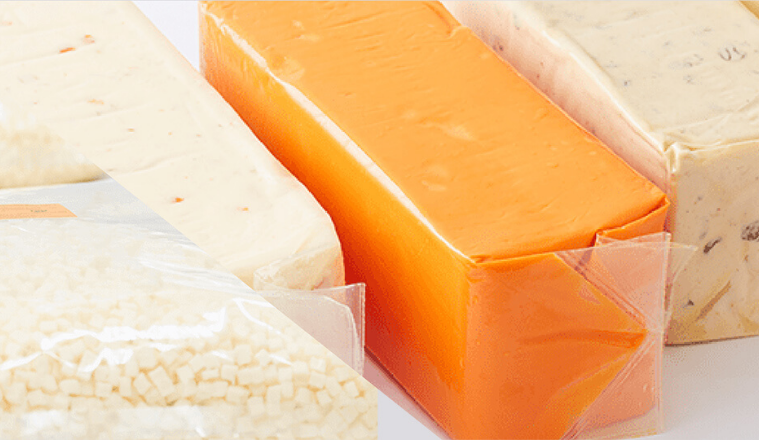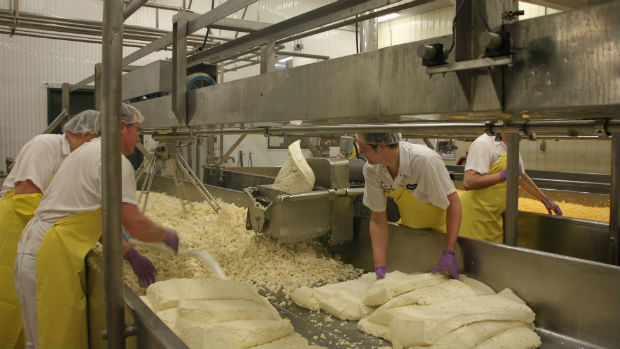A Thorough Consider Cheese Manufacturing: Active Ingredients, Approaches, and the Future of Artisan Cheeses
The detailed procedure of cheese manufacturing is a remarkable convergence of art and science, where top notch milk, rennet, and details bacterial societies serve as fundamental aspects. Traditional methods, such as salting and aging, are enhanced by contemporary developments that respond to developing consumer preferences. As the industry progressively prioritizes sustainability and transparency, the future of artisan cheeses assures to show both heritage and progression. Comprehending the subtleties of these methods elevates compelling concerns about the instructions of cheese manufacturing and its ramifications for top quality and authenticity. What exists ahead in this advancing landscape?
Trick Active Ingredients in Cheese Manufacturing
A variety of vital active ingredients play a pivotal role in cheese production, each contributing to the last item's taste, appearance, and personality. The key ingredient in cheese is milk, which can come from different sources, including cows, goats, and sheep - cheese makers melbourne. The sort of milk utilized considerably influences the cheese's preference and consistency; as an example, cow's milk normally yields creamier cheeses, while goat's milk typically creates tasty selections
An additional critical active ingredient is rennet, an enzyme made use of to curdle the milk, dividing it right into curds and whey. The resource of rennet can be animal, vegetable, or microbial, each passing on distinct qualities to the cheese. Societies, being composed of details strains of bacteria, are also important to the cheese-making procedure. They ferment lactose into lactic acid, helping in flavor growth and appearance.
Salt not just improves the flavor yet likewise acts as a preservative, hindering the growth of undesirable microorganisms. Furthermore, various flavor agents, such as herbs, flavors, or even smoked timber, can be included in create distinct artisanal cheeses. Together, these ingredients develop the foundation of cheese manufacturing, setting the phase for diverse and rich cheese varieties.
Standard Cheese-Making Techniques
Making use of conventional cheese-making strategies, artisans around the globe protect classic techniques that have actually been passed down through generations. These strategies commonly emphasize making use of premium, in your area sourced milk, which is main to the distinct flavors and textures of artisanal cheeses. The procedure generally starts with the careful home heating of milk, complied with by the enhancement of cultures and rennet to assist in coagulation.
Once the curds develop, they are reduced, allowing whey to drain, a critical step that influences moisture material and appearance. The curds are after that gently stirred and cooked to accomplish the desired firmness. Afterward, they are drained and pressed into molds. Salting is an important element of this process, improving taste while additionally acting as a preservative.
Aging, or affinage, is one more important part, throughout which cheeses develop their characteristic scents and preferences. Craftsmens might use particular maturing settings, utilizing humidity and temperature controls to fine-tune celebrity's profile. The dedication to these conventional techniques not only supports regional economic situations yet additionally adds to the abundant diversity of cheese ranges discovered around the world, celebrating cultural heritage and artisanal craftsmanship.
Modern Developments in Cheese Manufacturing
How have technical improvements changed cheese manufacturing in recent years? The assimilation of modern technology has actually revolutionized both the effectiveness and high quality of cheese manufacturing.
Additionally, innovations in microbiology have actually made it possible for cheesemakers to select particular microbial societies and enzymes, optimizing flavor accounts and boosting service life. Using sensing unit technology for keeping track of fermentation problems has actually also ended up being widespread, permitting real-time modifications to keep optimal atmospheres for cheese aging.

These improvements not only improve the high quality and sustainability of cheese manufacturing but likewise equip artisan manufacturers to maintain standard flavors while accepting modern-day efficiency. As innovation remains to progress, the future of cheese production looks promising, blending practice with development.
The Function of Terroir in Cheese
In the world of cheese production, terroir plays a pivotal function in specifying the distinct features of different cheeses. Terroir, a French term commonly linked with red wine, incorporates from this source the environmental variables that influence farming products, consisting of dirt structure, climate, and neighborhood plants and animals. In cheese-making, the unique qualities of the region where the milk is sourced can impart specific flavors and appearances to the final product.
As an example, the grazing problems of dairy products pets considerably influence the milk's structure, affected by the kinds of lawns and natural herbs available in a specific place. This varies not only between nations yet additionally in between areas within the same country. Furthermore, the microbial areas existing in the environment contribute to the fermentation procedures, bring about varied profiles in flavor and aroma.
Cheeses such as Roquefort, Parmigiano-Reggiano, and Cheddar exemplify exactly how terroir can form their identifications, making them distinctive and usually safeguarded by geographical signs. As manufacturers significantly acknowledge the value of terroir, there is an expanding focus on sourcing local active ingredients and maintaining conventional methods, guaranteeing that each cheese truly mirrors its beginning.

Future Patterns in Artisan Cheeses
A notable change is happening in the craftsmen cheese market, driven by progressing consumer choices and technological innovations. Progressively, consumers are inclining unique, high-grade items that stress both sustainability and neighborhood sourcing - cheese makers melbourne. This pattern is prompting artisan cheesemakers to introduce, focusing on small-batch manufacturing and the use of traditional methods while integrating modern technology to boost quality and safety and security
Furthermore, there is a growing passion in plant-based and alternative milk products, pushing typical cheesemakers to check out brand-new avenues, such as cashew or almond-based cheeses. This shift not only deals with nutritional restrictions however additionally aligns with environmental problems concerning pet farming.
Furthermore, openness in sourcing and production processes is coming to be critical. Customers are much more enlightened and demand traceability, triggering producers to embrace more clear labeling practices and take part in storytelling that highlights their techniques and worths.
Conclusion
Finally, the intricate procedure of cheese manufacturing combines standard strategies with modern advancements, read causing a diverse selection of tastes and textures. The emphasis on high-grade ingredients and the influence of terroir highlight the virtuosity included in cheese manufacturing. As the sector develops, an emphasis on sustainability and dig this openness will likely form the future of artisan cheeses, dealing with an increasingly discerning customer base that values credibility and craftsmanship in dairy items.